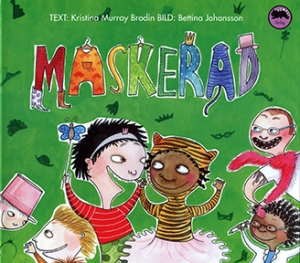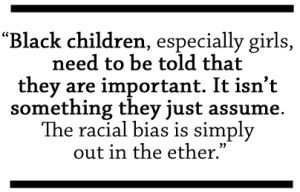 Stacy Whitman is Editorial Director and Publisher of Tu Books, an imprint of LEE & LOW BOOKS that publishes diverse science fiction and fantasy for middle grade and young adult readers. This blog post was originally posted at her blog, Stacy Whitman’s Grimoire.
Stacy Whitman is Editorial Director and Publisher of Tu Books, an imprint of LEE & LOW BOOKS that publishes diverse science fiction and fantasy for middle grade and young adult readers. This blog post was originally posted at her blog, Stacy Whitman’s Grimoire.
I recently got this question from a writer, who agreed that answering it on the blog would be useful:
My hero is a fifteen-year-old African American boy [in a science fiction story]. A few of my alpha readers (not all) have said that he doesn’t sound “black enough.” I purposely made him an Air Force brat who has lived in several different countries to avoid having to use cliche hood-terminology. I want him to be universal.
Do you have thoughts on this either way?
Is there a possibility that my potential readers could really be offended that a) I am “a white girl writing a book about black people” and b) that my character doesn’t sound black enough? I’ve looked through your blog and website and haven’t found anything specific to my needs on this particular question. Perhaps I missed it?
…should I use Ebonics or not use Ebonics?
First of all, black people—just as white people or Latino people—are a very diverse group of people. There are people who speak in Ebonics (which I believe would be more accurately referred to as BVE–Black Vernacular English) and people who speak plain old suburban English, people who speak with any of a variety of Southern accents and people who have Chicago accents, people who speak with French or Spanish accents (or who speak French or Spanish or an African language). So the question of whether a particular character in a particular situation sounds “black enough” is a complicated question, one that even the African American community can’t necessarily agree on. Within the community (and I say this because I asked a coworker who is African American, who can speak with more authority on the subject than I can) it’s often a question that draws on complicated factors, such as money, privilege, “selling out,” skin tone (relative darkness or lightness—literally, being “black enough”), and hair texture, which all relate to how much a part of which community a person might be.
The question, then, is fraught with loaded meaning not only to do with stereotypes, but also socioeconomic meanings. The question can also tend to be offensive because of that diversity and the loaded meaning the question carries.
Continue reading →
 The Absolutely True Diary of a Part-Time Indian by Sherman Alexie – banned for racism, sexually explicit language, and profanity.
The Absolutely True Diary of a Part-Time Indian by Sherman Alexie – banned for racism, sexually explicit language, and profanity.


 course it’s important to be aware of injustice, but it sends a powerful message if we only show racial diversity in settings of suffering and conflict.
course it’s important to be aware of injustice, but it sends a powerful message if we only show racial diversity in settings of suffering and conflict.




